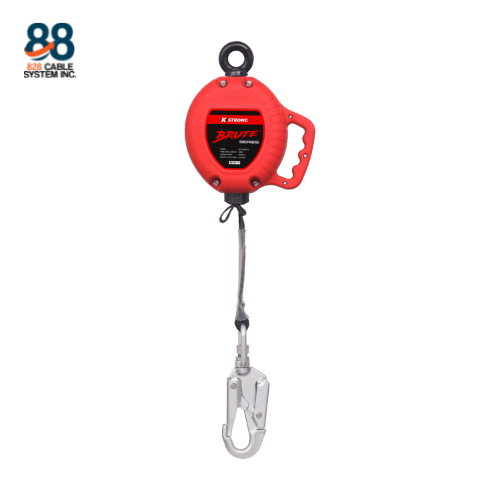
In the realm of workplace safety, preventing falls is a paramount concern, especially in industries involving high-altitude work or risky environments. Self-retracting lanyards (SRLs) play a crucial role in fall protection, ensuring that workers are safeguarded while maintaining their ability to move freely. This blog explores the essential functions of SRLs, their benefits, and how they compare to traditional fall protection methods.
What Are Self-Retracting Lanyards?
Self-retracting lanyards, also known as self-retracting lifelines (SRLs), are sophisticated safety devices designed to prevent falls and minimize injury. Unlike traditional lanyards, SRLs feature a mechanism that maintains a constant tautness while allowing the user to move about the work area. This dynamic flexibility is similar to how a car’s seat belt works—allowing freedom of movement but instantly locking in place during a sudden stop or accident.
How Self-Retracting Lanyards Work
The core functionality of a self-retracting lanyard lies in its internal braking system. Here’s how it works:
Constant Tautness: The SRL extends and retracts as the user moves, maintaining a taut lifeline that prevents slack.
Braking Activation: If a sudden tug or fall occurs, the internal braking system activates almost instantly, arresting further descent and reducing the risk of injury.
Energy Dissipation: The braking mechanism helps to spread the impact energy over a shorter distance, mitigating the potential for injury during a fall.
This advanced system is designed to offer superior protection compared to traditional lanyards, which may not provide the same level of immediate fall arrest and energy absorption.
Benefits of Using Self-Retracting Lanyards in the Workplace
Implementing self-retracting lanyard in workplace safety protocols offers several significant benefits:
Enhanced Safety: SRLs reduce the risk of injury by providing immediate fall arrest and energy absorption.
Increased Mobility: Workers can move freely within their work area without the restriction of slack or tangled lanyards.
Reduced Fall Distance: By maintaining tautness, SRLs minimize the distance a worker can fall, further reducing the potential for injury.
Numerous case studies have demonstrated that workplaces using SRLs experience fewer fall-related accidents and injuries compared to those relying solely on traditional fall protection methods.
Self-Retracting Lanyards vs. Fall Protection Lanyards
When comparing self-retracting lanyards to traditional fall protection lanyards, several key differences emerge:
Functionality: SRLs provide automatic retraction and fall arrest, whereas traditional lanyards require manual adjustment and may not offer the same level of fall protection.
Safety Features: SRLs come equipped with advanced braking systems that engage during a fall, while traditional lanyards rely on static rope and shock absorption mechanisms that may not be as effective.
Ease of Use: SRLs are designed for ease of use, with automatic extension and retraction, reducing the need for manual handling and adjustment.
Proper Use of Self-Retracting Lanyards
To maximize the effectiveness of self-retracting lanyards, proper usage is crucial:
Attachment: Ensure the SRL is securely attached to a stable anchor point and the body harness.
Fit and Adjustment: Adjust the SRL to ensure it maintains a taut line while allowing necessary movement. Avoid excessive slack to ensure optimal fall protection.
Inspection: Regularly inspect the SRL for signs of wear, damage, or malfunction. Replace any damaged components immediately to maintain safety standards.
Common mistakes to avoid include improper attachment points and neglecting routine inspections, which can compromise the effectiveness of the SRL.
Maintenance and Inspection of Self-Retracting Lanyards
Regular maintenance and inspection are essential for ensuring the longevity and effectiveness of self-retracting lanyards:
Inspection: Conduct thorough inspections before each use to check for damage, wear, or malfunction. Pay attention to the lifeline, braking system, and attachment points.
Maintenance: Follow manufacturer guidelines for cleaning and servicing. Keep the SRL free from contaminants and ensure that it operates smoothly.
Replacement: Replace the SRL or its components if any issues are detected, or according to the manufacturer’s recommendations for service intervals.
Takeaway
Incorporating self-retracting lanyards into workplace safety protocols is a critical step toward protecting workers from fall-related injuries. By understanding their function, benefits, and proper usage, organizations can enhance safety and compliance. Evaluate your current fall protection systems and consider upgrading to SRLs for a more effective and reliable solution.



